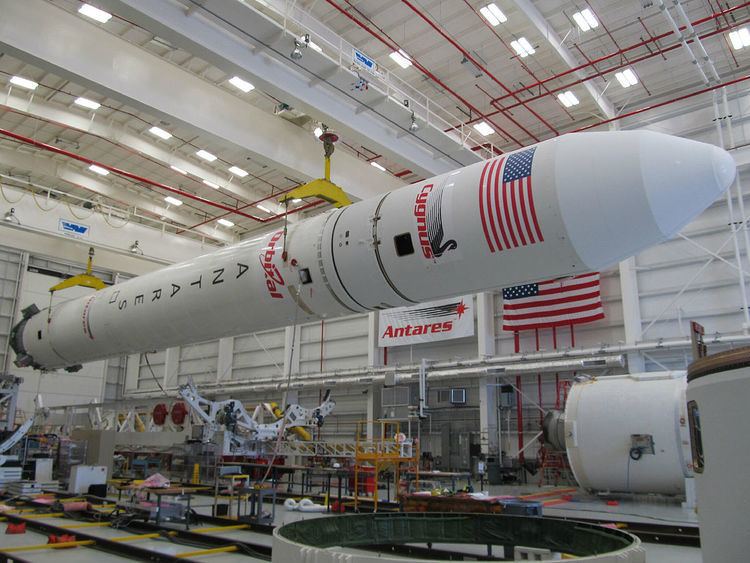Operator Orbital Sciences SATCAT no. 39145 | COSPAR ID 2013-016D Mission duration 603 seconds | |
 | ||
Mission type Technology demonstration | ||
Antares A-ONE was the maiden flight of Orbital Sciences' Antares rocket with a boilerplate payload, the Cygnus Mass Simulator, which was launched 21 April 2013. It was launched from Pad 0A at the Mid-Atlantic Regional Spaceport (MARS) on Wallops Island, Virginia, USA. The boilerplate payload simulates the mass of the Cygnus cargo spacecraft. This dummy payload was sent into an orbit of "approximately 150 by 160 miles" (240 km x 260 km) with an inclination of 51.6 degrees.
Contents
Four Spaceflight Inc. CubeSat nanosatellites were deployed from the dummy payload.
This launch along with several other activities leading up to it, are paid milestones under NASA's Commercial Orbital Transportation Services program.
Payloads
The primary payload was the Cygnus Mass Simulator (CMS). It had a height of 199.25 inches (5,061 mm), a diameter of 114 inches (2,900 mm) and a mass of 8,400 pounds (3,800 kg). It was equipped with 22 accelerometers, 2 microphones, 12 digital thermometers, 24 thermocouples and 12 strain gages.
The secondary payloads were four CubeSats that were deployed from the CMS. Three of them were PhoneSats, 1U CubeSats built by NASA's Ames Research Center. These were named Alexander, Graham and Bell, after the inventor of the telephone. The purpose of these three satellites was to demonstrate the use of smartphones as avionics in CubeSats. They each had a mass of 2.48 lb (1.124 kg) and were powered by lithium batteries. The fourth nanosat was a 3U CubeSat, called Dove-1, built by Cosmogia Inc. It carried a "technology development Earth imagery experiment" using the Earth's magnetic field for attitude control.
